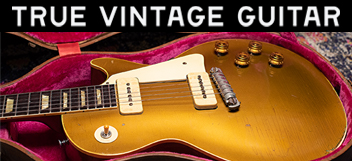Ulli
Member
- Joined
- Jun 9, 2011
- Messages
- 432
Well I aint 'assuming' anything, in fact going on what I can SEE, there are no lacquer cracks, hence my question. If I wanted to assume the answer, I wouldn't have asked the question! Yes you may well expect an original 59 to have cracks, but again you cannot see any.
Real weather checking is usually invisible from certain angles.
BTW: The Burst on the right is 9-1960 "Ruby".



